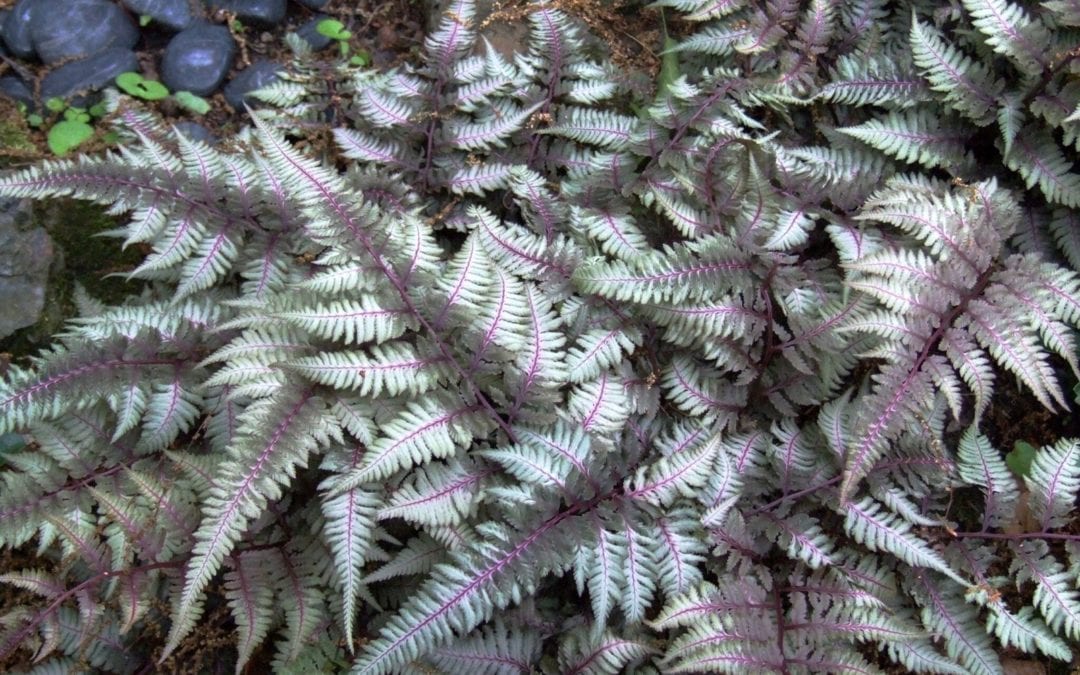Last week’s temperatures reminded us of what a Midwest summer heat wave feels like. Everyone out in the Nursery was looking for some relief in a shady spot. Whenever we walk past a shady garden, it immediately cools us down, even as the temperatures and humidity soar. Shade gardens avoid the chaos and clutter often experienced in sunny gardens. In color therapy, the color green is used to soothe and relax people. It can help those who are suffering from anxiety and nervousness. Designing a foliage garden can positively affect your psyche, and is beautiful botanically.
Using a higher percentage of foliage plants in the garden can be just as showy and interesting as using flowering ones. Leaves look good all season long, and there is no deadheading. Shade garden designs rely more on combinations of form, color and texture. Think of your shade garden as the opportunity to create a more gentle outdoor room, totally different from your frenetic sunny flowers.
Just because there aren’t flowers on which to rely for pizzazz, doesn’t mean that a shade garden will not be colorful. The best-known and probably most popular shade plant is the Hosta. These days, Hostas come in a veritable riot of leaf colors, shapes and sizes. From screaming chartreuse to cool blue, they are a mainstay of the shade garden. The overall texture is fairly coarse with large, broad leaf shapes and thick substance giving the garden a bold feel.
Ferns have come into their own as a valuable perennial group. Years ago they thought boring, but there are so many new varieties with which to work. The native woodland species are always beautiful and useful in the shade garden, and many are more sun-tolerant than you would believe. Maidenhair Fern is one of the most finely textured and delicate-looking plants you can imagine, but they are pretty tough and hardy in sunshine and drier conditions. And the vase shape of Ostrich and Cinnamon Ferns is very architectural.
One of the fern cultivars that we absolutely love is the Painted Fern. Very adaptable to differing growing conditions, Painted Ferns can grow in sun or shade, in wet or dry soils. The coloration tends to be more pronounced when sited with some direct sun. Keep in mind that they emerge very late in the spring, so don’t panic if you don’t see them right away.
Fothergilla is a close relative of our native Witchhazel. They share many of the same characteristics, like bottlebrush-shaped flowers in early spring and zigzagged stems that catch the winter snows. But they really come into their own in the fall as they turn intense shades of red, scarlet and orange.
There are a thousand reasons to love a shaded garden. Woodland and shade gardening can be so much more than just growing plants that bloom with less light. Plan your shade garden so that it tickles all of your senses and stimulates the mind as well as the eye. Shade gardens are worth growing if for nothing more than the play of light through leaves and the shadows of the woody architecture.

